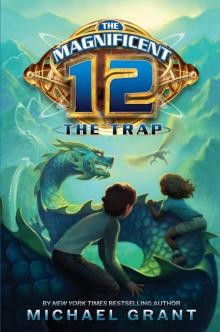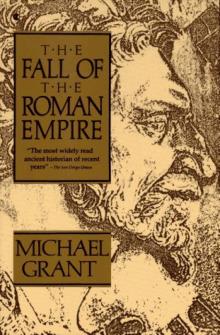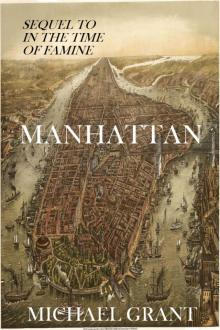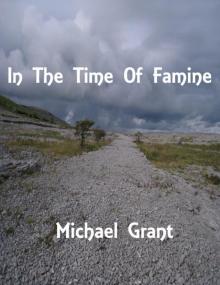- Home
- Michael Grant
The Fall of the Roman Empire
The Fall of the Roman Empire Read online
The Fall of the Roman Empire
Michael Grant
London : Weidenfeld Nicolson, 1996. (1990)
Tags: Non Fiction, History
Non Fictionttt Historyttt
* * *
* * *
SUMMARY:
History of the Roman Empire. Col. illus.
THE FALL
of the ROMAN EMPIRE
Michael Grant
WEIDENFELD AND NICOLSON
London
Copyright © 1990 Michael Grant Publications Ltd First published 1976 by the Annenberg School Press
This revised edition published 1990 by George Weidenfeld and Nicolson Ltd 91 Clapham High Street, London SW4 7TA Photoset in 10 on 12 pt Palatino by Deltatype, Ellesmere Port, S. Wirral Printed in Great Britain by The Guernsey Press Co. Ltd, Guernsey, Channel Islands.
All rights reserved. No part of this publication may be reproduced, stored in a retrieval system, or transmitted, in any form, or by any means, electronic, mechanical, photocopying, recording or otherwise, without the prior permission of the copyright owner.
British Library Cataloguing in Publication Data Grant, Michael, 1914-
The fall of the Roman Empire. - 2nd ed
I. Roman Empire, 395-476
I. Title
937'. 09
ISBN 0-297-82008-7
And if a kingdom be divided against itself, that kingdom cannot stand. Gospel according to St Mark y.24
Then join hand in hand, brave Americans all: by uniting we stand, by dividing we fall. John Dickinson, 'The Liberty Song', Boston Gazette, July 1768
Yes, we must, indeed, all hang together, or most assuredly we shall all hang separately. Benjamin Franklin at the American Declaration of Independence, 1776
We cannot any longer afford the luxury of tearing ourselves apart. British politicians, 1973-5
Contents
List of Maps ix
Introduction xi
Acknowledgements xv
Historical Survey of the Roman Empire 1
/ THE FAILURE OF THE ARMY
1 The Generals against the State 2j
2 The People against the Army 35
H THE GULFS BETWEEN THE CLASSES
3 The Poor against the State '51
4 The Rich against the State 69
5 The Middle Class against the State 80
III THE CREDIBILITY GAP
6 The People against the Bureaucrats 89
7 The People against the Emperor 100
IV THE PARTNERSHIPS THAT FAILED
8 Ally against Ally 113
9 Race against Race 124.
V THE GROUPS THAT OPTED OUT
10 Drop-outs against Society 145
11 The State against Free Belief 155
VI THE UNDERMINING OF EFFORT
12 Complacency against Self-Help 175
13 The Other World against This World 185
Appendix 1: Some Religious Disunities Appendix 2: Why Did the Eastern and
Not the Western Empire Survive? List of Emperors and Popes A Who's Who of Ancient Writers Some Books on the Decline and Fall Maps Index
List of Maps
1 The Western and Eastern Empires AD 395 (Inset) Boundaries of Praetorian Prefectures
2 The Barbarian Invasions of the Fifth Century AD
3 Europe after the Fall of the Western Empire AD 476
4 Italy
5 Gaul and the Rhine
6 The Upper and Middle Danube
7 The Balkans
8 The East
9 North Africa and Spain
Introduction
The fall of the Western Roman Empire was one of the most significant transformations (a favourite word for the whole process, especially in Germany) throughout the whole of human history. A hundred years before it happened, Rome was an immense power, defended by an immense army. A hundred years later, power and army had vanished. There was no longer any Western Empire at all. Its territory was occupied by a group of German kingdoms.
Hundreds of reasons have been suggested for the collapse of the Roman West. Some indication of their variety can be obtained from reading Edward Gibbon's superb and never truly superseded History of the Decline and Fall of the Roman Empire (1776-88). He lists at least two dozen supposed causes of that decline and fall - military, political, economical and psychological. Many of these 'causes' will be referred to in the pages that follow. But the historian himself made no attempt to marshal them one against another, or choose between them. That is rather disconcerting for the reader who is searching for quick answers. But it also shows a good deal of prudence. For an enormous, complex institution like the Roman Empire could not have been obliterated by any single, simple cause.
It was brought down by two kinds of destruction: invasions from outside, and weaknesses that arose within. The invasions are easy to identify, and they will be described in the preliminary section of the present volume. However, they were not sufficiently formidable in themselves to have caused the Empire to perish.
It perished because of certain internal flaws which prevented resolute resistance to the invaders: and the greater part of this book will be devoted to discovering those flaws.
I have identified thirteen defects which, in my view, combined to reduce the Roman Empire to final paralysis. They display a unifying thread: the thread of disunity. Each defect consists of a specific disunity which split the Empire wide apart, and thereby damaged the capacity of the Romans to meet external aggressions. Heaven forbid that we ourselves should have a monolithic society without any internal disunities at all, or any differences of character or opinion. But there can arrive a time when such differences become so irreconcilably violent that the entire structure of society is imperilled. That is what happened among the ancient Romans. And that is why Rome fell.
This theme has always attracted keen interest, largely because of the guidances and warnings it is supposed to offer to later generations, and this relevance has never seemed more visible than today. Britain thinks of its own vanished empire. The United States of America think of their current leadership, and of how it might be in danger of coming to an end. The Soviet Union seems to be showing at this very moment how smaller peoples break away from empires. France is the country where, in ancient times, this first happened. Germany spans the east-west border, and is very conscious of its ancient role as the destroyer of the Western Roman Empire. Italy is the country where that empire ruled and fell. And so on. I have not, in this revised edition, attempted to flag or discuss every echo, every similarity. But one or another of them, in various parts of the world, readily leaps to the eye.
I want to thank Mr Walter Annenberg, who invited me to write the original version of this book when he was the United States Ambassador in London, for his constant help and encouragement. I am also deeply grateful to the late Mr David H. Appel for his unfailingly constructive and sympathetic aid. I wish to express my profound appreciation to Mr Christopher Falkus for a great deal of stimulating, invaluable assistance. I owe acknowledgments to Mrs Enid Gordon, Mr Peter Quennell, and Miss Susan Reynolds for help that they have given, to the Annenberg School Press for preparing the first edition, and to Miss Jocelyn Burton who has, with constructive suggestions, produced this second, revised edition. And my wife's support has been indispensable.
MICHAEL GRANT
Gattaiola 1990
Acknowledgments
I would like to acknowledge the quotation of passages from ancient authors translated by W. B. Anderson, P. Brown, J. B. Bury, O. A. W. Dilke, C. D. Gordon, A. Hawkins, H. Isbell, D. Magie, F. X. Murphy, A. F. Norman, C. Pharr, R. S. Pine-Coffin, J. C. Rolfe, E. M. Sanford, E. A. Thompson, H. G. E. White, F. A. Wright and
T. A. Sinclair.
HISTORICAL SURVEY OF THE ROMAN EMPIRE
The Roman Empire was of enormous dimensions, extending from the Atlantic to the River Euphrates, and from Britain to the Sahara desert. It was the greatest political achievement of ancient times, and one of the very greatest of all ages. Well might one of its own writers, Pliny the elder, speak of the 'immense majesty of the Roman peace'.
The creation of this mighty organism was a slow and gradual process. In the dim, distant days of the semi-legendary past, Rome had been a small Italian city-state under the rule of kings. Then, perhaps at about the turn of the sixth century BC, the kings were overthrown and a Republic came into being. Its sovereign body was an Assembly of Roman citizens, but the real power was concentrated in the hands of a few noble families. These formed the nucleus of the Senate, which, although technically only an advisory body, in fact directed the government for generation after generation.
During the next two hundred years Roman rule was gradually built up over one region after another in Italy itself. Then, in the third century BC, Rome clashed with the sea-power of north-African Carthage and gained control of the western Mediterranean. Thereafter, up to the last years before the Christian era, this Empire was extended to the eastern Mediterranean basin as well. Under the strain of governing these vast and varied territories, the machinery of the Republic broke down, and in the time of Julius Caesar and then Augustus (31 BC-AD 14), founder of the long line of Roman Emperors, the Senate was reduced to a subservient role from which it never emerged again. Its members, the leading men of the state next to the ruler himself, retained an importance that could not be ignored. But the Emperors, however much this was concealed beneath Augustus' constitutional facade, depended for their survival on the army.
That moment when the Republic ceased and the Empire or Principate began also witnessed the breakthrough of Imperial rule to the central and northern portions of the European Continent. Caesar established his northern frontier on the Rhine, and Augustus prolonged this boundary for the whole length of the Danube. On the other side of these barriers, all the way from the Netherlands to Aquincum (Budapest), the peoples who gazed across the rivers at the Roman defences were Germans. As time went on, forcible encounters between Germans and Romans became more and more frequent.
The chief gods worshipped by the German tribes were gods of war. But the tribesmen were also familiar with agriculture and stock-breeding, and what they saw and learned of Rome's settled and prosperous provinces excited their desire for a share of these benefits. Furthermore, they themselves were under pressure from remoter peoples living further north and east. When, therefore, in the second century AD, the Germans near the frontiers began to co-ordinate their activities in larger confederations and coalitions, the Empire - which was also in confrontation with the Parthian kingdom along its eastern borders - was in trouble.
The problem first became grave in the reign of Marcus Aurelius (161-80), who had to face a collusive general onslaught from the north which plunged the Empire into its first major crisis for many years. Septimius Severus (193-211) noted the lesson and increased the size of Rome's army. He also remunerated it better. This meant, in the years ahead, fiercer taxation for the civilian population whose comparatively easy-going, comfortable lives had to be drastically modified in order to pay the 400,000 soldiers of the army.
Nevertheless, for the greater part of the third century AD the Imperial frontiers were broken by repeated and simultaneous hostile incursions, from Germans and others in the north and from Persians (the much more formidable successors of the Parthians) in the east. It seemed as if the Roman world, which was also split into fragments by internal revolts, could not possibly survive. Yet, in one of the most striking reversals in world history, Rome's foes were hurled back by a series of formidable military Emperors.
However, the price the inhabitants of the Empire had to pay was enormous. In order to raise the gigantic contributions in cash and kind that were needed to maintain an army capable of performing such feats, tax requirements continued to rise to unprecedented levels. First Diocletian (284-305), and then Constantine the Great (306-37), radically overhauled and regimented the entire administrative system in order that the necessary payments should be extorted.
Constantine, in common with other Emperors of the time, made extensive use of German soldiers and officers in his own army - at first Franks and Alamanni, later Visigoths and Ostrogoths (the two branches of the Gothic race) and Vandals and Burgundians. Moreover, like some of his predecessors but on a larger scale, he allowed German immigrants to settle under Roman supervision within the frontiers. But the military threat from German tribesmen who were still outside, as well as from the Persians at the other extremity of the border, persisted with undiminished force.
Constantine drew the conclusion that Rome was no longer a suitable capital. Living there, it would be too hard for him to maintain simultaneous control over the two vital frontiers, the Rhine and Danube in the north and the Euphrates in the east. Earlier rulers, already feeling the same, had from time to time established their residences at places more accessible to the defence zones. Mediolanum (Milan) had been a favourite choice, and Constantine himself had dwelt in a number of other centres: Treveri (Trier) in western Germany, Arelate (Aries) in southern France, Ticinum (Pavia) in north Italy, Sirmium (Sremska Mitrovica) on the Illyrian (Yugoslavian) river Savus (Save), and Serdica (Sofia) in Moesia (Bulgaria). But he now decided that the ideal site for simultaneous supervision of the Danube and Euphrates frontiers alike was Byzantium on the Bosphorus; and there he founded his new capital, Constantinople, on the site where Istanbul is today.
Constantine also put into effect a second major revolution by officially converting the Empire from paganism to Christianity -raising a relatively small and uninfluential Christian community to a dominant position in the state. Then he died, and left the Empire divided amongst his three sons, of whom Constantius n (337-61) proved the survivor. In his reign troubles on both the northern and the eastern frontiers revived sharply. Near the Rhine, his cousin Julian won an important victory over the Germans at Argentorate (Strasbourg) in 356; five years later, he came to the throne. Known as 'the Apostate', Julian reverted to official paganism. But in 363, during a Persian campaign, he lost his life, and under his successor, Jovian, the Empire returned to Christianity. However, he died in the following year.
DECLINE AND FALL
The hundred and twelve years beginning from that date, and concluding with the termination of the Western Empire, comprise the period with which this book will be mainly concerned.
The date when the Empire first began to decline and fall has long been disputed. A school of Marxist historians, with the support of Arnold Toynbee, declared that the crisis of classical civilization leading to Rome's collapse started as far back as 431 BC, when the city states of Greece were locked in hostility with one another in the Peloponnesian War - four centuries before the Roman Emperors, whose downfall this event was alleged to foreshadow, even began.
Edward Gibbon had taken a very different view, refusing to see too much wrong with the Empire at a date a full six hundred years later:
. . . If a man were called to fix the period in the history of the world during which the condition of the human race was most happy and prosperous, he would, without hesitation, name that which elapsed from the death of Domitian to the accession of Commodus [AD 96-180].
Subsequent historians have queried his assertion, pointing out that the slave population, for example, could scarcely be described as 'happy and prosperous', and that many of the things that went manifestly wrong later on were already quietly going wrong behind the scenes as early as Gibbon's supposed golden age. Yet, if we limit the 'human race' to the population of the Empire, and consider how its majority was faring, he was probably not too wide of the mark.
Subsequently, in the third century AD, under the joint pressures of external threats and internal rebellions, the Empire bega
n to fall apart. Yet this was by no means the end, since it was only a good deal later still, as late as the turn of the fifth century AD, that the final downfall really began.
A start, therefore, with the present book will be made in the reign of Valentinian i (364-75), when this downward process was about to start: though in his day Rome still seemed to be at the height of its power.
VALENTINIAN I
In 364 the army acclaimed Valentinian 1 as Emperor, and he was the last really impressive Emperor Rome ever had. He came from Cibalae (Vinkovci) in Pannonia (Yugoslavia). He was tall and vigorous - a champion wrestler - with fair hair and bluish-grey eyes, regular features, a long face and a large straight nose. Although his enemies sneered at his barbarous origins, he was quite thoroughly educated, and a clever painter and sculptor.
His character was disconcerting: cruel, jealous, evil-tempered and panicky. Nor was he a reliable judge of the civilians he chose to govern the Empire on his behalf. Yet Valentinian was a superb soldier and a conscientious worker, endowed with ferocious energy. He felt a strong duty to the state, and, much more unusual, a strong duty to the poor, an emotion which he combined with a considerable distaste for the Roman upper class. More unusual still, in the age in which he lived, he believed in tolerating differences of religious opinion. For all his faults he would have been an outstanding man in any epoch, and it is only because of the misleading tradition which dismisses the personalities of the later Empire that most people have never heard of him.
Valentinian decided that the needs of national defence required there should not be one single Emperor only, but two. In consequence, he gave his brother Valens the East, and took the West for himself. The Western Empire that he inherited was immense, with a large army to defend it, and after his eleven-year reign he left it stronger than ever.

 Fear
Fear Plague
Plague BZRK: Apocalypse
BZRK: Apocalypse Bzrk
Bzrk Love Sucks and Then You Die
Love Sucks and Then You Die Silver Stars
Silver Stars The Key
The Key Front Lines
Front Lines BZRK Origins
BZRK Origins Monster
Monster Gone
Gone The Snake
The Snake The Power
The Power Hunger
Hunger Lies
Lies A Sudden Death in Cyprus
A Sudden Death in Cyprus Messenger of Fear
Messenger of Fear Eve & Adam
Eve & Adam The Trap
The Trap Light
Light An Artful Assassin in Amsterdam
An Artful Assassin in Amsterdam The Call
The Call Hero
Hero Soldier Girls in Action
Soldier Girls in Action Purple Hearts
Purple Hearts The Tattooed Heart
The Tattooed Heart The Fall of the Roman Empire
The Fall of the Roman Empire BZRK Reloaded
BZRK Reloaded Messenger of Fear Novella #1
Messenger of Fear Novella #1 The Magnificent 12
The Magnificent 12 Fear: A Gone Novel
Fear: A Gone Novel Villain
Villain Manhattan
Manhattan Eve and Adam
Eve and Adam Plague: A Gone Novel
Plague: A Gone Novel Fergie Rises
Fergie Rises In the Time of Famine
In the Time of Famine Hunger_A Gone Novel
Hunger_A Gone Novel Lies g-3
Lies g-3